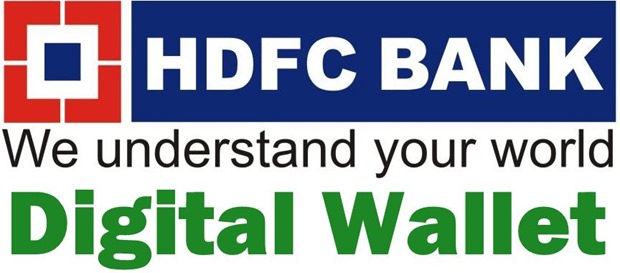HDFC Bank Enters Digital Wallet Arena. Wants To Dominate Digital Payments Market!
HDFC Bank has introduced their own digital wallet in India, which they have termed as “The future of mobile payments”. To make it easier for merchants to accept payments via digital wallet, HDFC has enabled Near Field Communication (NFC) based contact less payment facility as well.
Besides HDFC Bank account holders, non-HDFC bank users can also use their Digital Wallet, making it platform independent.
Highlighting the importance of digital wallet, Parag Rao, senior EVP and Head of card payment products in HDFC said, “Our digital wallet will enable the transaction to be completed in two steps, which substantially cuts down the failure rate on mobile phone purchases, which is as high as 50%,”
Digital wallets meet RBI’s 2 step verification process while making a payment; and, it is now increasingly being used by consumers and shoppers, especially in the ecommerce and retail segment.

Why HDFC Can Become A Major Player of this Niche?
Currently, HDFC Bank accounts for 40% of all ecommerce transactions, as they are both card issuer and processor of card based payments. Now, with their own digital wallet, they can quickly gain market share and encourage other non-HDFC bank holders to join them as well.
As per estimates, Rs 1.2 lakh crore worth of Digital payments were made last year in India, out of which, 20% were accomplished on mobiles. Although only 3% of them were done using a digital wallet, the usage and popularity is increasing day by day.
It is being estimated that by 2020, 30% of all digital payments will be done using a digital wallet.
Mobile Wallet Popularity Is Increasing
Google introduced Google Wallet way back in 2011. In the same year, Nokia came up with their own Nokia Money Wallet.
In 2012, eMudhra launched their YPayCash digital wallet. Later that year, ICICI Bank in collaboration with Vodafone launched their own M-Pesa which was a mobile money transfer and digital wallet. Infibeam too launched their own mobile wallet in the same year.
In 2013, Flipkart launched their own digital wallet: PayZippy, which was closed down last year. IRCTC too launched their own digital wallet to make train booking easier.
2014 was the year when several popular startups integrated mobile wallet payment mechanism into their service offering.
Oxigen wallet was launched in April 2014; Meru Cab introduced cashless payment with collaboration with Citrus mobile wallet in October; the same month Ola cabs also integrated mobile wallet payment system; in November Uber integrated PayTM mobile wallet into their payment system.
Even Café Coffee Day now accepts payments via mobile wallet!
There are lots of companies right now, which are providing digital wallets for consumers, but the demand is at a all time high. As per RBI, there are around 350 million debit card and 19 million credit card holders in India right now, and with PM Modi’s Jan Dhan Yojana, this figure may double by the time 2015 ends. There is a huge untapped market in India when it comes to mobile based payments, and Digital Wallet can become the perfect catalyst for it’s growth.
Alibaba recently invested $575 million (Rs 34,500 cr) in PayTM, which is arguably, India’s one of the oldest and biggest mobile wallet platform. And this signifies the growth trend which we are about to witness in this niche.
It would be interesting to observe how much penetration HDFC Bank is able to make in this niche yet strong market.

$575 million (Rs.34500 Cr). Is it a correct conversion.